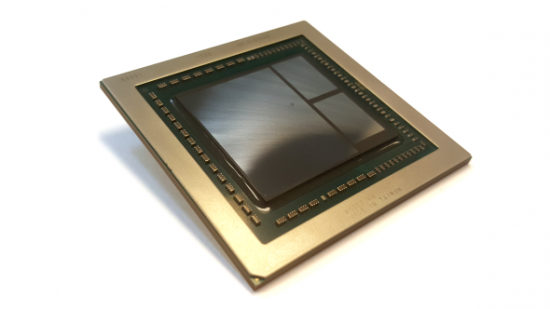The next-generation AMD Navi GPU architecture is set to get its first outing in August 2018 at next year’s SIGGRAPH show, according to Tweaktown’s sources. This professional GPU’s launch won’t be when we’ll see the consumer cards rolling around, but if AMD follow their Vega release cadence we might see RX Navi cards arriving a couple of months later.
Read more: the best graphics cards to buy right now.
It was at SIGGRAPH 2017 that AMD launched their consumer-facing Radeon RX Vega 64 graphics cards, though it’s only now that actual stock is readily available. That wasn’t the Vega architecture’s first outing, however, as the Vega-powered Instinct MI25 accelerator card was revealed a couple of months earlier, in June.
This time next year then we might have 7nm AMD RX Navi cards ready to power our PCs, though that still seems rather soon to us. But, even though we’re set for a 12nm Vega refresh early next year, AMD’s graphics division is going to need something more if they hope to be able to compete properly with the upcoming Nvidia Volta GPU technology. And getting Navi out of the door before the end of the year makes a lot of sense from that perspective.
Quite what else the new AMD Navi GPU technology is going to offer, besides its 7nm transistors, is still unknown outside of Austin. AMD have repeatedly said that Navi is going to be their real game-changing GPU architecture, however, which leads us to believe that we’re not going to see the traditional monolithic silicon design that’s been the hallmark of modern graphics cards.

While Vega is essentially a modified version of the 14nm Polaris GPU, redesigned for higher clockspeeds, AMD also introduced their high-speed Infinity Fabric interconnect into their graphics chips for the first time. They’ve gone on record saying that it will form the basis of all their future ASIC designs, and we’ve gone on record as to why we think that’s a big signal as to how they’re going to get the Navi architecture out quickly.
They’re going modular.
The AMD Vega GPUs could then be the last big graphics chip they design, with Navi being formed of different modules connected via the threads of Infinity Fabric. That would enable AMD to have multiple dedicated 7nm Navi GPU cores, with the rest of the chip made of existing, easy-to-manufacture 14nm (or even larger) silicon. That could potentially cut down any potential yield issues associated with a brand new production process on a complex GPU design, and mean they don’t have to create a 7nm graphics processor with all the video accelerator and PCIe and memory controllers inside it.
That would allow AMD to get the Navi GPU designs ready for manufacturing by the end of the summer next year, with consumer-focused Radeon RX Navi GPUs ready to roll for the holidays.
Exciting, eh? And all we’ve got to look forward to this year is the imminent release of Nvidia’s GTX 1070 Ti.
